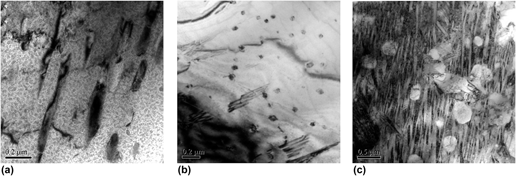Article contents
Effects of heat treatments on microstructure and properties of nickel–aluminum bronze fabricated by centrifugal casting
Published online by Cambridge University Press: 12 December 2016
Abstract

A kind of nickel–aluminum bronze (Cu–10Al–4Fe–4Ni) prepared by centrifugal casting (CC) and gravity casting (GC), respectively, were investigated. The results indicate that CC alloy, which is totally different from GC alloy, consists of α, κI, κII, κIII, κIV, and β′ phases and the microstructures of CC alloy shows nonuniformities from external to internal layer mainly because the distribution of iron and nickel are influenced by centrifugal force. Besides, it is noted that comprehensive mechanical properties of CC alloy are superior to those of GC alloy. Additionally, heat treatments were performed on CC alloy. The results demonstrate the optimal heat treatment is aging at 450 °C/1 h by air cooling after solution treated at 890 °C/1 h by water quench. The ultimate tensile strength and hardness are increased by about 10% and 56%, respectively, and wear resistance is also greatly improved. However, the elongation is decreased by 53%.
- Type
- Articles
- Information
- Copyright
- Copyright © Materials Research Society 2016
References
REFERENCES
- 9
- Cited by



